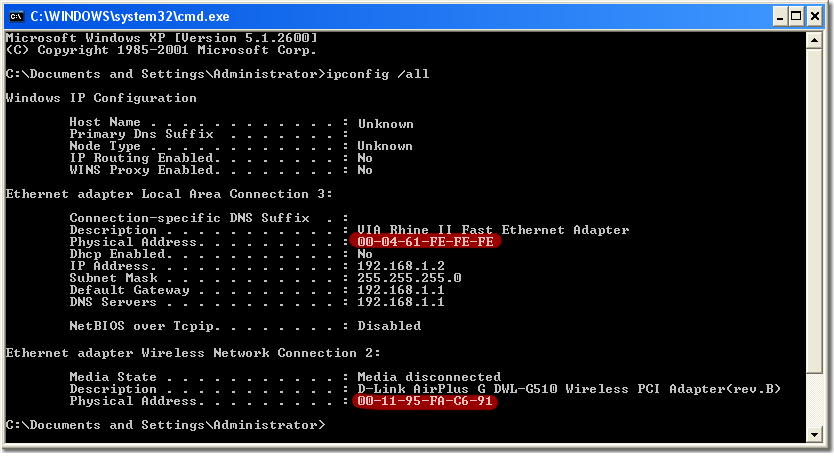- Cisco Mac Address Table
- Command For Mac Address Cisco Packet Tracer
- Cisco Mac Address List
- Command For Mac Address In Cisco Switch
Hi i blocked some mac address's using this CLI command. How to remove added mac address to access the network. Class-map match-any UNWANTED-PCs. Match source-address mac aaaa.bbbb.cccc. Match source-address mac nnnn.jjjj.dddd. Match source-address mac oooo.llll.pppp! Policy-map block. Class UNWANTED-PCs. Description 'LAN. A configuration mode command that enables or disables Cisco Discovery Protocol (CDP) for the device: show mac address-table: Displays the MAC address table: show cdp: Shows whether CDP is enabled globally: show cdp neighborsdetail. Mac address-table static. Adds static entries to the MAC address table or configures a static MAC address with IGMP snooping disabled for that address. Show mac address-table aging-time. Displays information about the time-out values for the MAC address table. Show mac address-table count. Displays the number of entries currently in the MAC.
Tags
catalyst, cisco, it-works, network, router, switch
If you have a big network with multiple Access Switches connecting to the core switches or routers then tracing a device like a PC or a laptop for troubleshooting or security purposes is one of those tasks that you often end up doing. This is not a difficult task but can certainly be time consuming.
Lets start with an IP address on hand. If you have an IP address on hand quickly ping and check if the device is pingable. If yes, then simply logon to one of your core switches or routers and do a simple sh ip arp
From the above you know the MAC Address of for the device:
IP Address : 192.168.1.15
MAC Address : 0000.1111.1111
Now, do a show mac-address command on the core switch or router. This will show the interface to which it is connected or through which it is learned.
This indicates that the device is either connected to the port or though another switch which is connected to the interface. Looking at this, it is very likely that this is a uplink (TenGigabit Ethernet link) to another Distribution or Access switch.
Sometimes, the output might show as follows [note the Po1]
This indicates that there is a etherchannelis being setup. So do a “show etherchannel” command to find the phsycial ports that are paired.
This shows the ports Te1/1 or Te2/1 as a source through which the address is learnt.
Now, do a “show cdp neighbors” to show the directly connected devices.
Cisco Mac Address Table
That tells you, it is the Access switch 1 that is connected to Te1/1 and not the device itself.
Now, log onto the Access switch and do a “show mac-adddress-table” command for the MAC address and that should show the interface to which it is connected
[NOTE: unless it is a distribution switch to again there are a bunch of Access switches connected in which case, you need to go through the whole procedure as above again]
As you can see which port the device is connected and on which switch.

Now do a “show interface” command to show the port details.
There you go you found the device switchport that you tried to trace!!!

source: here
I recently started reevaluating how we do port security as a result of a recent customer's information security audit. We normally turn on port security and set the maximum MAC addresses to 1 (the default) or 2 (if there is an IP phone connected). The default behavior is to disable the port when the MAC changes or if the number of concurrent MAC’s exceeds the maximum.
However during testing I discovered this didn’t work exactly like I expected. Port security was enforced as long as a device stayed connected to the port. If the port was disconnected, the switch would remove the pre-existing MAC’s and ANY new device could connect, as long as the maximum was not exceeded. While this prevents unauthorized hubs and switches, it doesn’t prevent someone from unplugging a device and plugging in a different unauthorized device.

The solution to this is to use the sticky option on the port security interface command: [more]
- switchport port-security – enables port security, optional “maximum <n>” to set the max greater than 1
- switchport port-security mac-address sticky – turns on the sticky MAC feature
After enabling, you will notice the currently connected MAC address(es) will appear in the running config:
- switchport port-security
- switchport port-security mac-address sticky 0080.6433.xxxx

This will stay in the config until the switch is rebooted, so it’s important to write the config.
Command For Mac Address Cisco Packet Tracer
Other related commands:
Cisco Mac Address List
- show port-security address – lists all the learned MAC addresses by interface
- show port-security interface fa0/1 – shows the detailed port security settings for an interface, including enable/disable status
- clear port-security sticky interface fa0/1 – clears the learned sticky MAC addresses, must be done prior to a shut/no shut to re-enable a port disabled due to port security
When you use sticky MAC addresses you'll want to make sure that the MAC addresses are cleared off of a switch when a device is moved. We had a laptop that was moved from one client location to another and one of the distribution switches was thinking the device was plugged into the old switch and the other distribution switch thought it was plugged ito the new switch. This created a situation where some network traffic was reaching the laptop and some was going into a black hole. After clearing the the sticky MAC addresses on the old switch the problem was resolved.
Command For Mac Address In Cisco Switch
Update: You might also be interested in a couple stick MAC address tips.
